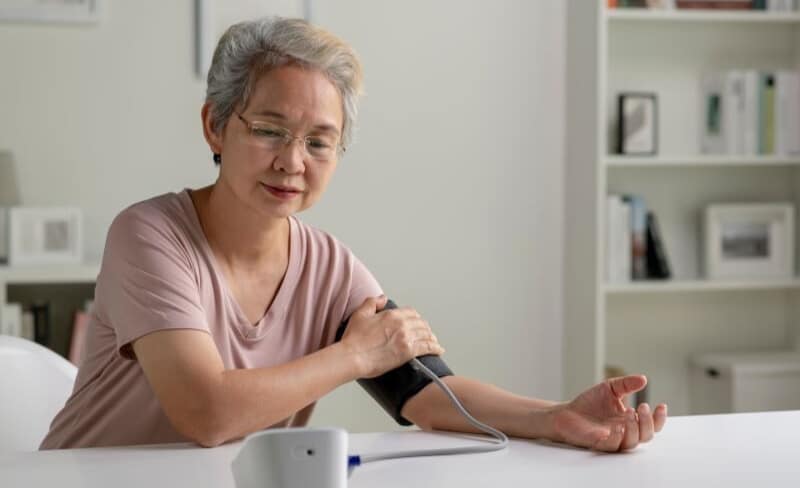Even before the onset of the global COVID-19 pandemic, remote patient monitoring (RPM) had been steadily growing in popularity, offering compelling benefits for both providers and patients alike. Even as we move forward from the pandemic, however, it appears that RPM is here to stay.
So, as new innovations continue to emerge and patient preferences continue to skew toward remote monitoring for certain conditions, there’s no time like the present to determine whether RPM is right for your practice and patients.
Chances are, if you’re reading this article it means you’re aware of the benefits of remote patient monitoring and are perhaps wondering “is remote patient monitoring worth it for my practice?” While the simple answer is yes, in this article we’re going to explore a few cost-related questions related to RPM, so you can determine whether the investment in remote patient monitoring software will provide enough ROI for your organization.
What Is the Cost of a Remote Patient Monitoring System?
Due to the high number of variables that must be considered, it’s difficult to estimate the total cost of remote patient monitoring services. We can, however, shed some light on the different costs you’ll need to consider as you evaluate the viability of RPM for your organization. Some of these include:
- The primary objective(s) and scope of the RPM program.
- Costs associated with servicing the patients in the program.
- Direct costs associated with remote patient monitoring devices, remote patient monitoring software, and RPM services including initial setup, IT and system integrations, and training.
- Operational costs, including one-time fees or ongoing subscription plans, as well as maintenance and updates.
At TimeDoc Health, we provide several different RPM pricing models so you can choose what will best fit your needs. You can choose from:
- Software Only: Best for organizations who do care coordination in-house but need an efficient way of reaching more patients.
- Full Service: Best for organizations who want to offer virtual care management but do not want to do care coordination themselves.
- Hybrid: Best for organizations with minimal capacity to take on care coordination in-house but would like to take on more of an active role over time.
Each of these plans comes with free implementation, as well as a dedicated Client Success Manager, training and education, Medicare audit support, and advanced electronic health record (EHR) integration.
As a Provider, Can You Bill for Remote Patient Monitoring?
Yes, there are specific CPT remote patient monitoring codes that apply to RPM billing, including 99453, 99454, 99457, and 99458. For patients with Medicare coverage, remote monitoring can be billed with these codes, provided that they conform to the appropriate guidelines, which include that the patient must have an “acute care or chronic condition” appropriate for RPM, and:
- RPM data must be “collected electronically and automatically uploaded” to an appropriately secure and accessible location.
- The program must use FDA-approved remote patient monitoring devices.
- Remote monitoring data must be “collected for at least 16 days out of 30 days.”
Does Insurance Cover Remote Patient Monitoring?
Yes, remote monitoring services are covered by many private health insurance plans, as well as Medicare and most state Medicaid agencies.
Who Pays for Remote Patient Monitoring Devices?
It depends. In some cases, the practice pays for devices that are utilized in the RPM program. Patients may have cost sharing responsibility for device utilization as well as program services delivered by the care coordinator each month. In other cases, patients pay for remote monitoring devices, but they can often be reimbursed through their insurance or Medicare/Medicaid coverage. Providers may seek reimbursement for matters like patient setup and training, as well as for managing RPM devices.
Is Remote Patient Monitoring Effective?
Yes—for many chronic conditions RPM is at least as effective as more traditional methods of chronic care monitoring and management. The U.S. Government Accountability Office (GAO) recently determined RPM to be “a significant factor that improved or maintained the quality of care, which further encouraged its use and implementation.” The same research strongly correlated RPM programs with “fewer emergency department visits, hospital readmission avoidance, and reduced hospital length of stay” for patients.
How Much Cost Savings Does Remote Patient Monitoring Provide?
While RPM will generally provide cost savings, the exact amount will depend on a given patient’s condition(s) and the type(s) of remote monitoring they utilize, among other factors. In a recent Journal of American Medicine Association cost-utility analysis, it was found that RPM was “associated with 87% fewer hospitalizations, 77% fewer deaths, and reduced per-patient costs of $11,472 over standard care.”
Deliver Value with TimeDoc Health
TimeDoc Health provides a powerful platform healthcare providers can use to overcome the key challenges that come with remote monitoring, including:
- Closing gaps in care
- Engaging populations with chronic conditions
- Supporting value-based care
- Reducing cost of care
Learn more about how our remote patient monitoring platform can deliver real-time insights for better care, or reach out to get started today.




